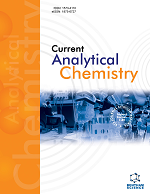
Full text loading...
The additives from container closure systems used in biopharmaceuticals, including antioxidants and vulcanizing agents, may leach into drug products during production or storage and result in patient exposure. Thus, there is an urgent demand for developing a robust and sensitive method for the simultaneous determination of these additives.
An approach utilizing vortex-assisted liquid-liquid microextraction coupled with high-performance liquid chromatography has been developed for the simultaneous determination of 8 antioxidants and free sulfur in biopharmaceutical samples. The extraction parameters, such as the choice of extraction solvent, HCl volume, vortex time, and disperser solvent, were optimized to ensure maximum extraction efficiency.
The optimized method was validated successfully, exhibiting acceptable recovery rates ranging from 89.2% to 109.0%, excellent repeatability (2.9% to 5.1%, n=6), and intermediate precision (3.7% to 5.9%, n=12), and satisfactory linearity with an R2 value of 1.000 for all the additives. Additionally, the limits of detection and quantification were determined to be in the range of 1.9–30.0 μg/L and 7.5–120.0 μg/L, respectively.
The proposed method was effectively applied to the analysis of additives in biopharmaceutical samples.

Article metrics loading...

Full text loading...
References


Data & Media loading...
Supplements

